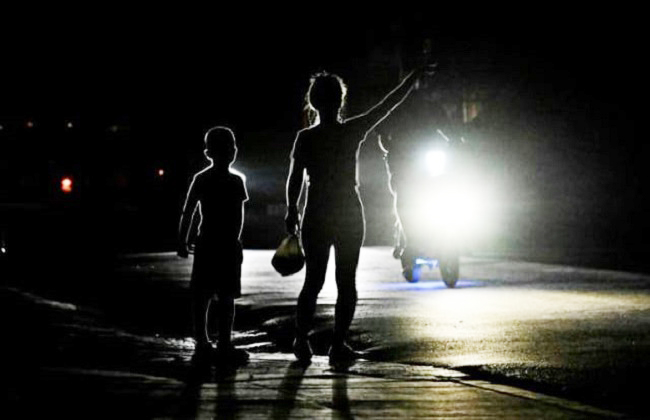
One thought lingers all day in the mind of Diana Ruiz: How will the Cuban mother feed her 6-year-old son, a dilemma faced by parents across an island hit by blackouts and food shortages.
“The first thing I say when I get out of bed is, what am I going to give my son to eat? And when I go to bed, what can I give him for a snack, or for his breakfast?” Ruiz tells AFP from her home in Nuevo Vedado, a central district in Havana.
The 31-year-old Ruiz, who is four months pregnant, moves in the narrow space between her cupboard, which holds some rice and a few rolls of bread, and a fridge containing more rice, a pot with a little stewed meat, containers of water and some juice.
“That’s all there is,” she says hopelessly in her house where she also lives with her blind father.
A clamor over food shortages and blackouts led hundreds of people to demonstrate in at least four Cuban cities on March 17, the largest protests since historic anti-government marches on July 11, 2021.
The unusual demonstrations erupted first in Santiago de Cuba, the island’s second largest city, which has endured up to 13 hours a day of blackouts. Many of the protesters were women.
Days later, President Miguel Diaz-Canel attributed the unrest to “an accumulation of long blackouts that greatly annoy the population.”
Food shortages, he added, were due to “fractures in the timely distribution of the basic food basket.”
A human rights group, Justicia 11J, reported this week that it tallied 17 arrests related to the protests, while Spain-based Prisoners Defenders told AFP it has documented the detention of 38 people, six of whom were released.
Authorities in 2023 said a lack of hard currency impeded imports required to provide basic food rations at highly subsidized prices to the island’s 11 million people.
Meanwhile, according to official figures, agricultural production fell 35 percent between 2019 and 2023.
In February, Cuba requested for the first time support from the UN World Food Programme to guarantee the supply of milk to children, after announcing it would not be able to complete that month’s rations.
At the beginning of the year, authorities also struggled to deliver bread due to delays in wheat shipments from abroad and breakdowns in four of the country’s five mills — resulting in the country meeting only about a third of total demand.
Although the capital does not suffer the long blackouts affecting the rest of the island, for many people food arrives in dribs and drabs.
“They come in small quantities, one pound today and in X days another pound,” says Aracely Hernandez, 73, a resident of Bacuranao, a town on the outskirts of Havana.
The retiree says she receives a pension of 1,500 pesos ($12.50 at the official exchange rate) and that a package of chicken costs her 3,000 pesos outside the rationing system.
“You have to squeeze and pedal hard because everything is very expensive,” she laments.
Since 2021, private stores also offer milk, bread, chicken and other basics, but at prices that are out of reach of those earning an average wage.
Mired in its worst economic crisis in three decades, the island is experiencing an inflationary spiral.
In 2021, prices shot up 70 percent, followed by increases of 39 and 30 percent the following two years, a surge not seen before during the more than six decades of communist rule on the island.
For Arturo Lopez-Levy, a research associate at the School of International Studies at the University of Denver, the US embargo hinders all of Cuba’s efforts.
However, “the Cuban government has opted for a system that is very hostile to market structures… the model is in crisis,” he says.
The government “tries to preach a moral of egalitarian quality that it cannot sustain,” Lopez-Levy adds.
“What is behind the protests? Fundamentally, shortages and a rupture of the social pact” between the population and the communist government.
In the first decades of the revolution, Cuba had better living conditions thanks to strong support from the now-defunct Soviet Union, he says, but the arrangement cannot be sustained like in the past.

